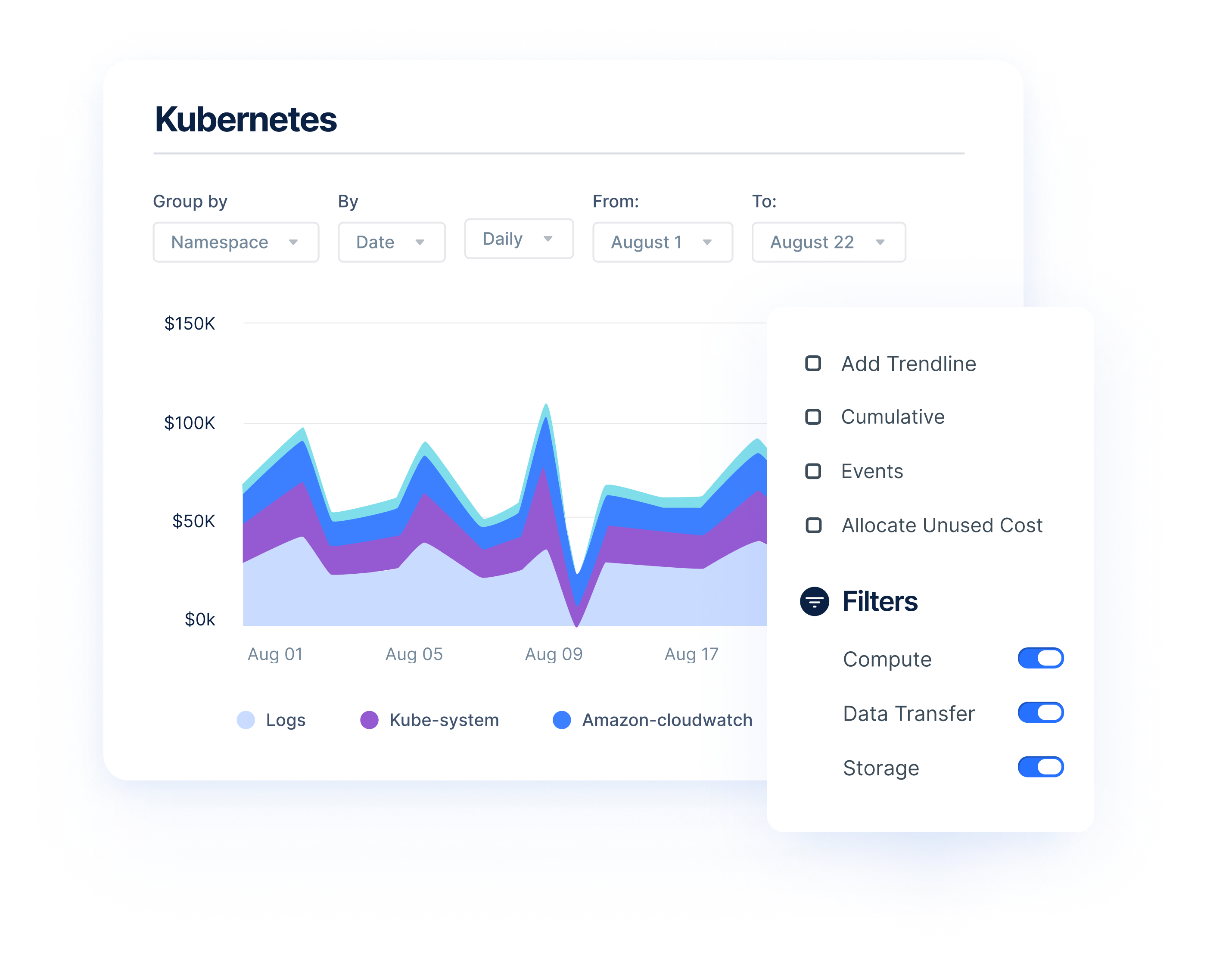Optimizing Kubernetes Costs
Gartner predicts by 2022, more than 75% of global organizations will be running containerized applications in production, a huge jump from the mere 30% in 2019. Kubernetes remains the most popular container orchestration in the cloud.
According to the Cloud Native Computing Foundation (CNCF)
- 96% of organizations are already using or evaluating Kubernetes in 2022
- Kubernetes has crossed the adoption chasm to become a mainstream global technology
With more organizations adopting Kubernetes, the reality is setting in that there is tremendous potential cost impact due to lack of visibility into the cost of operating Kubernetes in the cloud. According to CNCF, inefficient or nonexistent Kubernetes cost monitoring is causing overspend.
Cloud experts at Anodot and Komodor recently hosted a webinar to discuss the challenges of optimizing cloud costs and how to empower teams to control Kubernetes costs and health.
The rise of FinOps
Historically, engineers and architects did not have to worry too much about operational costs. Now, engineers are on the hook for the financial impact of:
- Code resource utilization
- Node selections
- Pod and container configurations
Meanwhile, finance has dealing with the transition from the CapEx world of on-premises IT to OpEx-driven cloud as well as comprehending cloud cost drivers and the complexity of the cloud bill.
That’s why more organizations have cross-functional Kubernetes value realization team, often called FinOps or Cloud Center of Excellence. The goal of this team is to strategically bring engineering and finance together and remove barriers to maximizing the revenue return on your business’ investment in Kubernetes.
Visibility into Kubernetes is critical
Getting control of Kubernetes costs depends primarily on gaining better visibility. CNCF combines all aspects of visibility together with monitoring, but, when asked what level of Kubernetes monitoring they have in place:
- Nearly 45% of industry respondents were simply estimating costs
- Almost 25% had no cost monitoring in place
With 75% of organizations running Kubernetes workloads in production, now is the time to eliminate cloud cost blindspots by understanding K8s cost drivers.
Kubernetes cost drivers
In order to build better visibility, organizations need to understand the seven primary Kubernetes cost drivers:
- Underlying nodes
- Pod CPU/memory requests/limits
- Persistent volumes
- K8s scheduler
- Data transfer
- Networking
- App architecture
In the webinar, experts outline specific strategies that will empower your team gain visibility into and optimize each of the Kubernetes cost drivers.
Anodot for Kubernetes cost optimization
To enable Finops that covers all of Kubernetes, enterprise organizations are choosing Anodot for continuous visibility into K8s costs and drivers so you can understand what elements are contributing to your costs and tie them to your business objectives.
With Anodot, you can visualize your entire Kubernetes and multicloud infrastructures from macro, infrastructure-wide views, all the way down to the specifics of each container.






